|
|
| Разместил (Author): |
SergUA6  |
| Авторские права |
© http://www.radioscanner.ru |
|
|
Текст
|
The signals analysis. Practical approach. The real signal 7970.wav
It is always necessary to spent estimation of the current record's quality before the analysis of the signal. It is very essential and important step. This step, in many cases, allows to avoid useless work with problematical records as: the records with overloads, with the distortion of amplitudes, compression and etc. There is lot of information about records quality, but as practice, the very small amount of people take this information into attention.
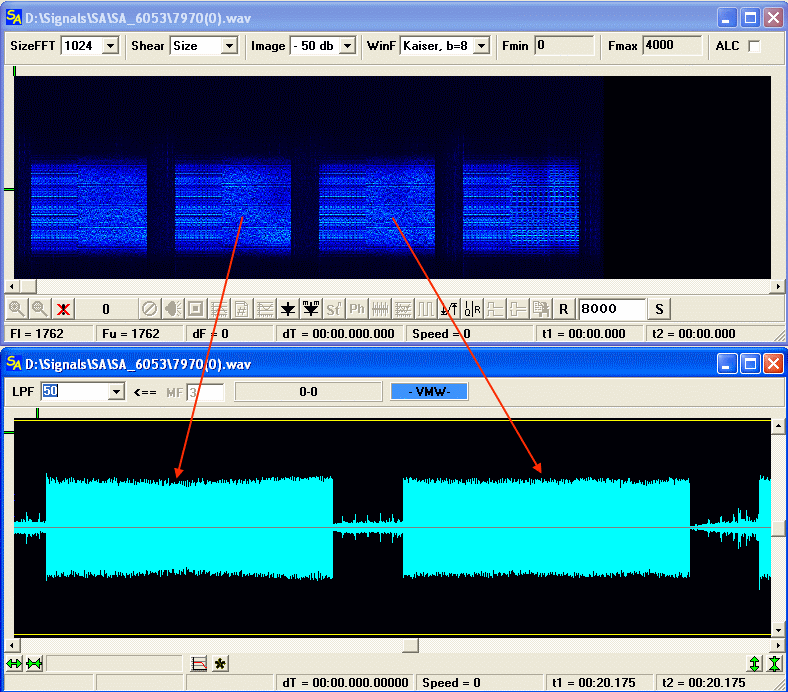
In our case, any of specifyc problems are not observed. The signal is "live" and it "breathes", the noise level is small enough, that allows to hope for the successful analysis. The best fragments by the spectrum are the first and the third. The second and the fourth fragments have the visible selective distortions, althoguht it is the not the reason for denial of 2 and 4 fragments, but we are choosing the best fragments. By the first look, this signal seems like founded OFDM. The typical mistake in such cases, is the orientation on the searches of the signal's parametres as OFDM, that is the other versions are not even considered. It is the mistake in the sense, that even if any disparities will be detected, it will be very hard to stop consider the signal as OFDM. All the attention will be paid to signs in favour of the OFDM version, and the signs, which are not in favour of this version, most likely will be recognised as accidental and ignored. As I always say, even if the signal seems very "familiar" or "clear" the approach to it should be always standard and same as to absolutely unfamiliar and unknown signal, to which all arsenal of knowledge and abilities is applied. And only then, having gathered the various data, it is possible to do conclusions and to check all the versions, co-ordinating the results, received earlier. Lets gather, without going deep, the data in favour of OFDM.
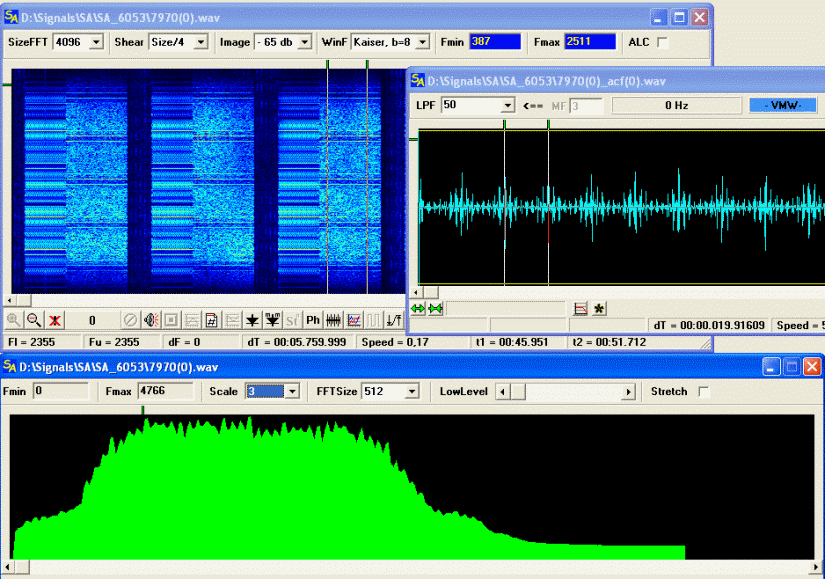
The spectrum's sort/look on the sonogram, especially in the first part of the signal is very similar to OFDM, it is possible to distinguish "channels" and "pilots-tones". The second part is lesser similar to OFDM, but nevertheless is does create the strong enough impression of the block-channel transmission, and the "pilots-tones" between the blocks. ACF is bad and does not give the clear answer, besides, it is visible on the waveform, that the signal "is slightly beaten" by the impulse interferences. So it is not clear what ACF is that. The graphical spectrum also does not give any special pluses in favour of OFDM, the whole spectrum has not clear ejections through each ~50 Hz, and it is hard to to say is that the result of creation of the signal or something else.
In that way, there is no any forcible arguments in OFDM favour, except the first impression. The situation with "pilots-tones" brings even more suspicions: the pilot-tone, even in OFDM without CP, should be located in relatively pure space. In this signal, we hardly can recognise that condition, but ofcourse it is possible to recognize if You have great desire to believe that the first OFDM impression is correct, and if You ignore all disparities, which are not in OFDM favour.
Lets take envelope of the signal.
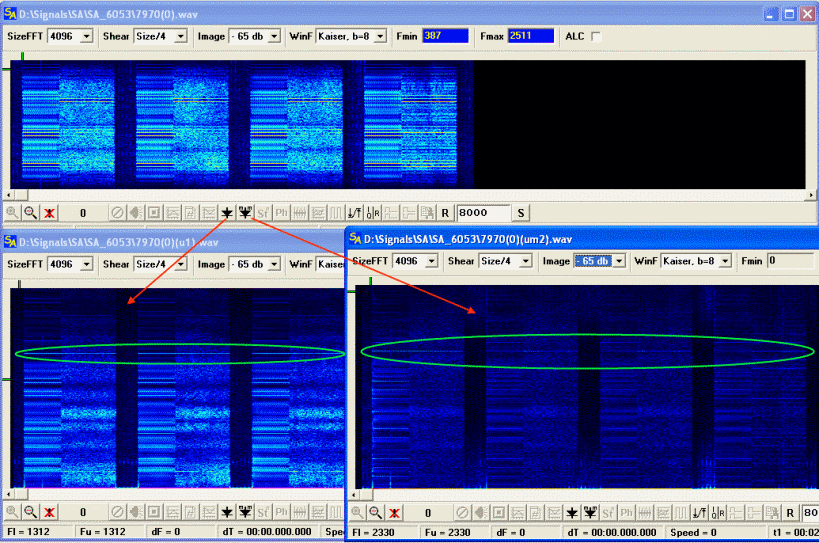
There is bright enough and obvious line on the position of expected line of the clock frequency. That line can say that the signal is already not OFDM, but FSK, PSK or QAM. The FSK is denied very fast after using of Phase/frequency detector. But to define is the signal is PSK or QAM is problemcaticaly enoguh. Methods allowing to detect QAM, in current SA version do not exist, whether I'm also not assured if these methods are exist in general. It is possible to define QAM or PSK on the signal's constellation, but it assumes the absolute high quality of the signal's record, and knowledge of the carrier frequency of the signal.
It is not possible to receive the carrier frequency on this signal assured, because the signal has distortions. SA allows to restore the signal, by the clock frequency, from supposition that it is PSK. That is, the semi-automatic corrector, in AM mode, attempts to restore the signal being orinted not on
the concrete PSK order, but on the signal's belonging to PSK class basically, and also oriented on value of the clock frequency. It is not such trivial task, it also does work far not in all cases, but this only thing that we have. To check this version, I have taken the third fragment.
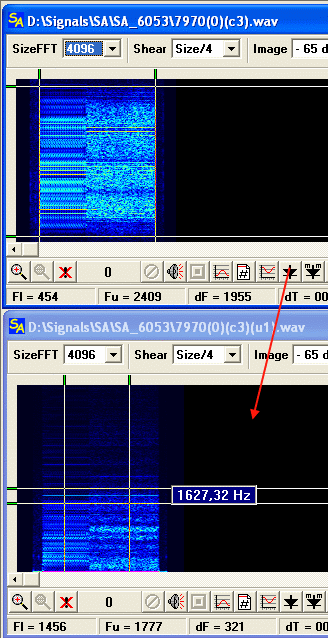
The work with the semi-automatic corrector, was described earlier, both in the program's Help and in other articles, so i won't consider the work of the semi-automatic corrector in the detals. I will result screenshots after attempts of restoring the signal by the semi-autmatic corrector. Here is also the video-clip, which shows the process course of how semi-mode corrector works with this signal.
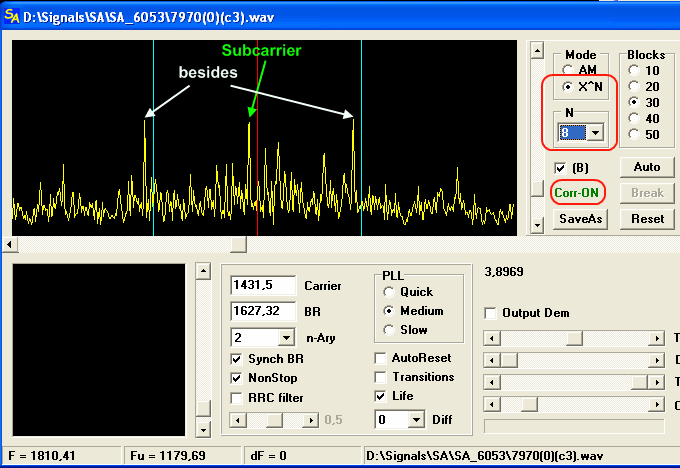
Literally after four-five passeges of the semi-automatic correcotr in AM mode, the classical picture is appeared in the eighth degree. After getting of the classical picture, it is possible both to continue correction in AM mode, and to switch into X^N mode, or to combine both modes. This is the deal of technique results are usually reached very fast.
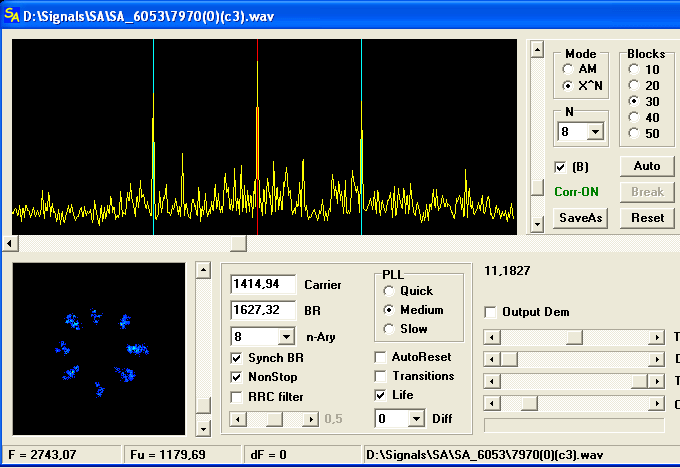
The question is: maybe it is just the fortuity or the comdination of incredible coincidences, and the corrector has distorted the signal into PSK? Theoretically it is possible. But in practice, it is very improbable, athough sometimes it happens. For detection of such cases, it is necessary, periodically to inspect/controll waveform of the signal in the first degree: the absence of deep failures in the signal's bar or the absence of obvious distortion of the waveform, atleast guarantee the absence of obvious distortions of the signal, unless guarantee 100% total accuracy of the corrector's work.
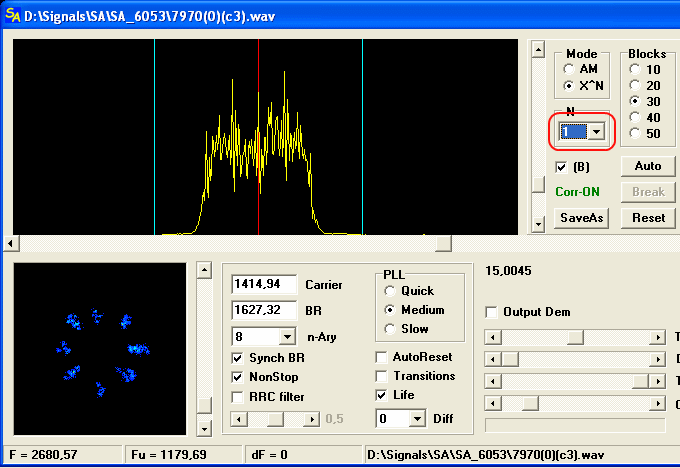
It is necessary to save the signal and to compare it with initial signal, essential differences should not be present. Ofcourse after the semi-automatic corrector's work the signal will be another, with more correct spectrum, with its much more regular allocation. But the signal after corrector's work should not be the absolutely another signal, the main features and structure should stay same.
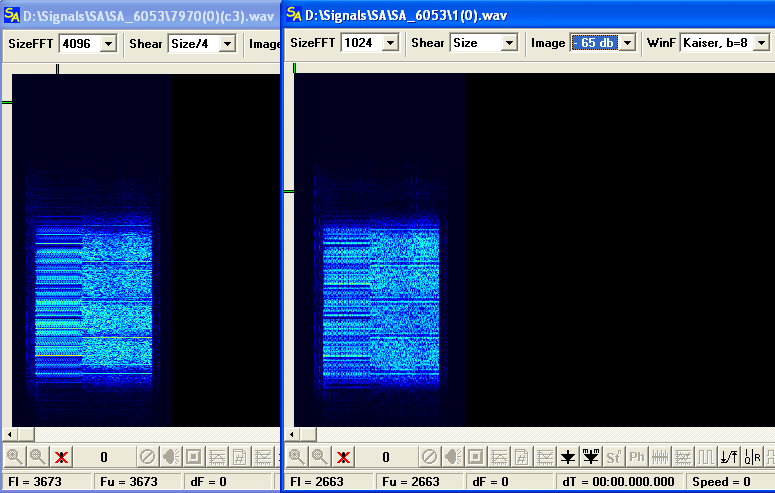
Good Luck!
|
|
|
|
Добавлять комментарии могут только зарегистрированные, активировавшие регистрацию и не ограниченные в доступе участники сайта!
|
| Файл создан: 21 Jul 2009 21:20, посл. исправление: 21 Jul 2009 22:02 |
|

